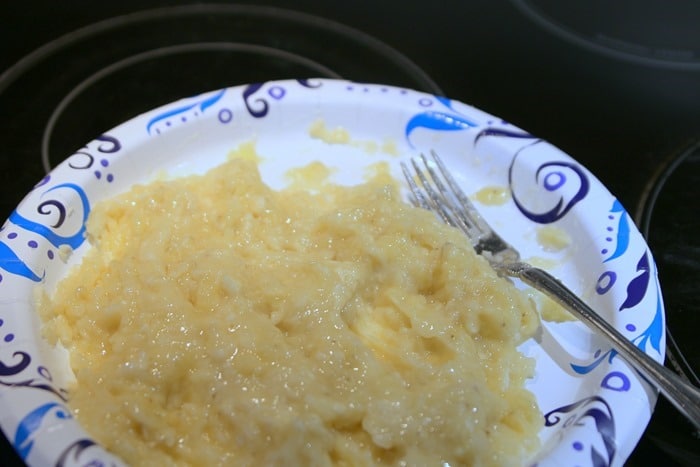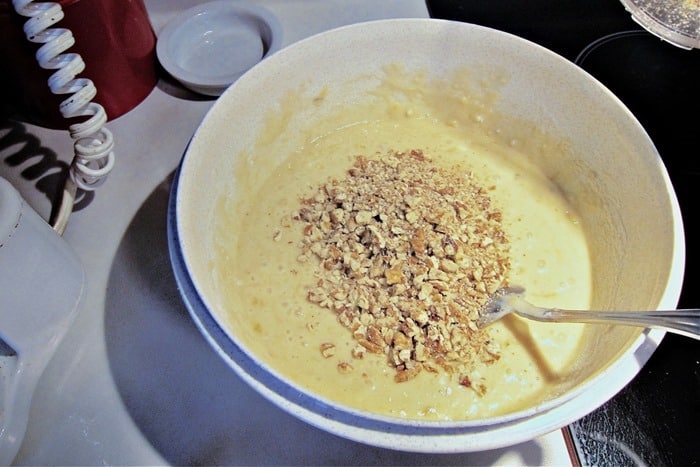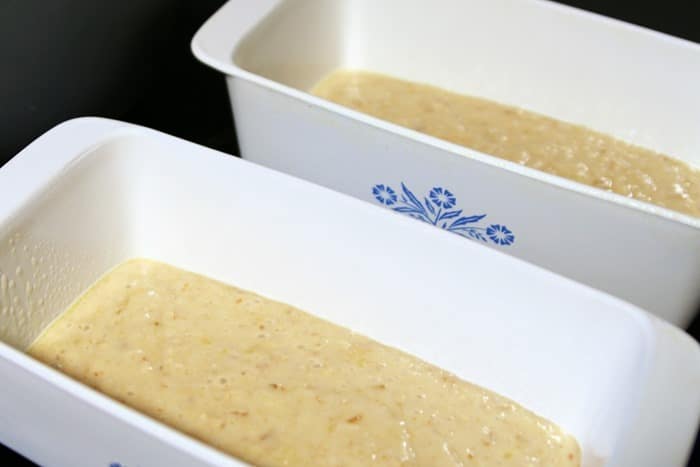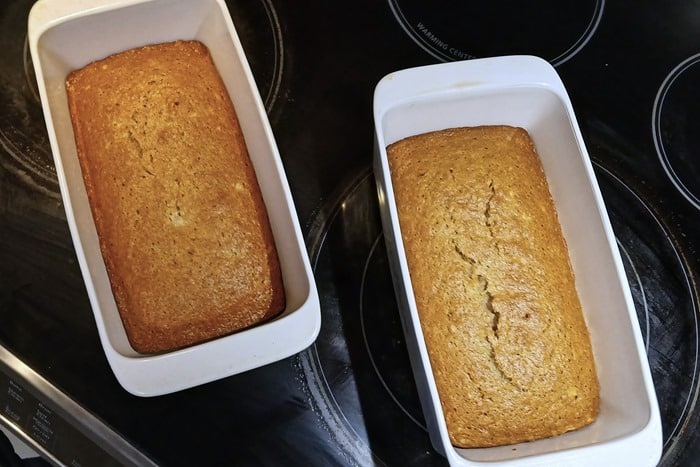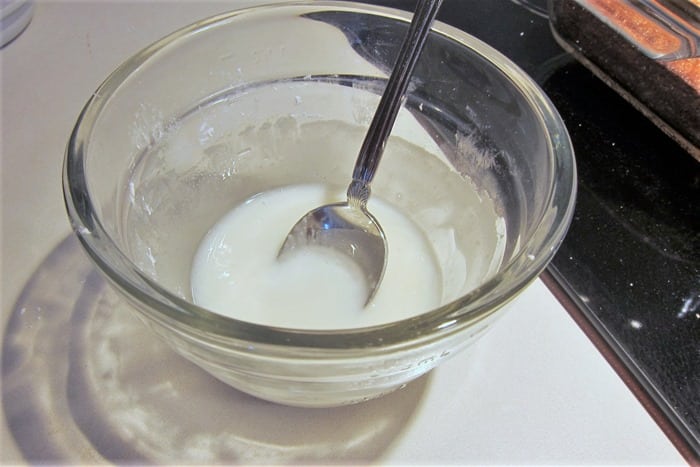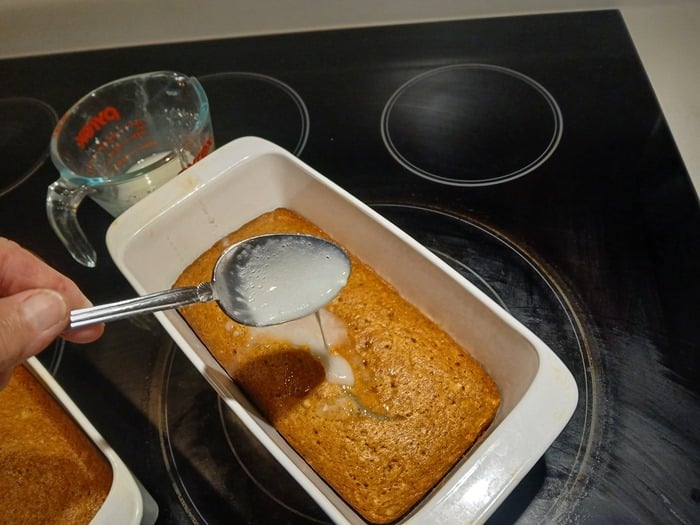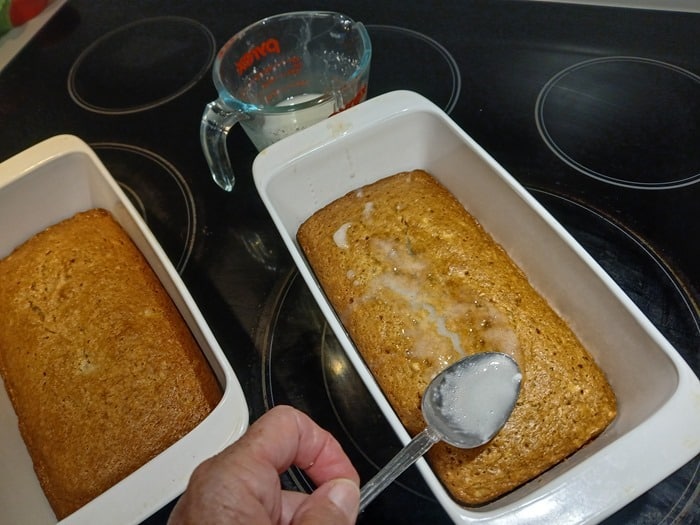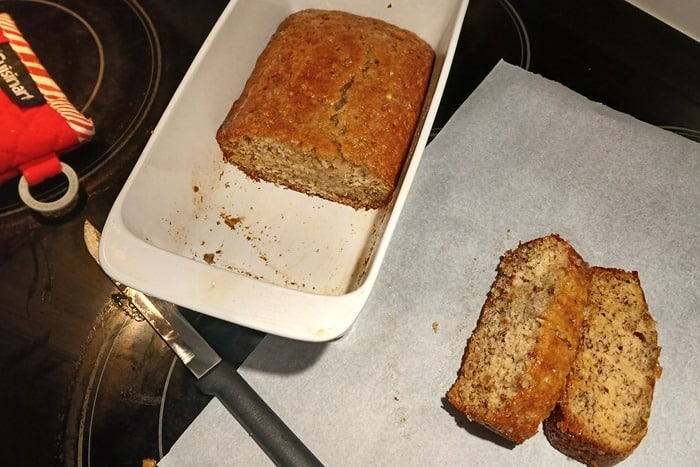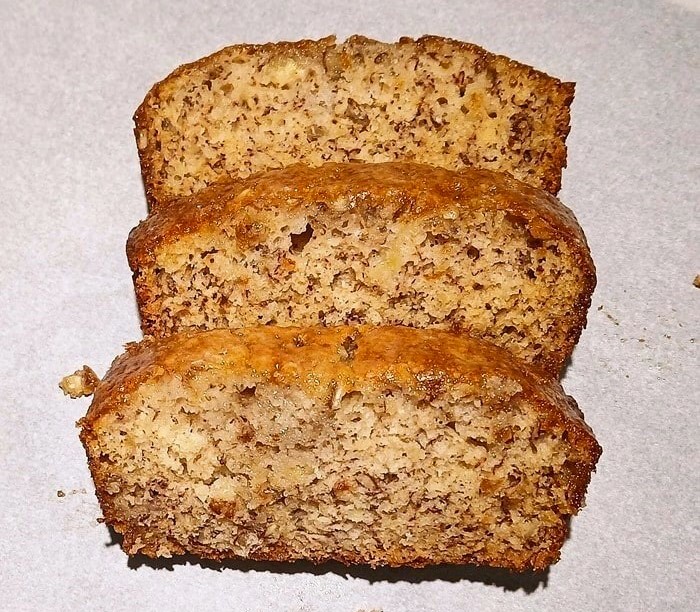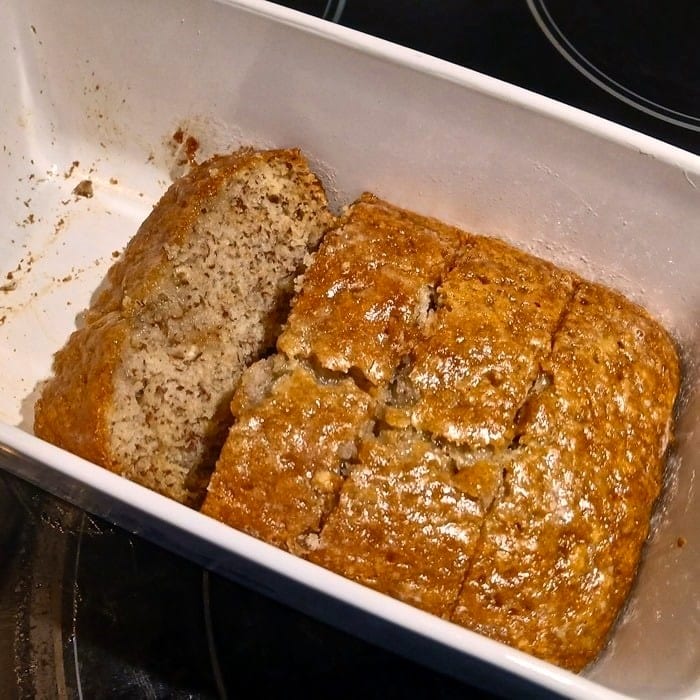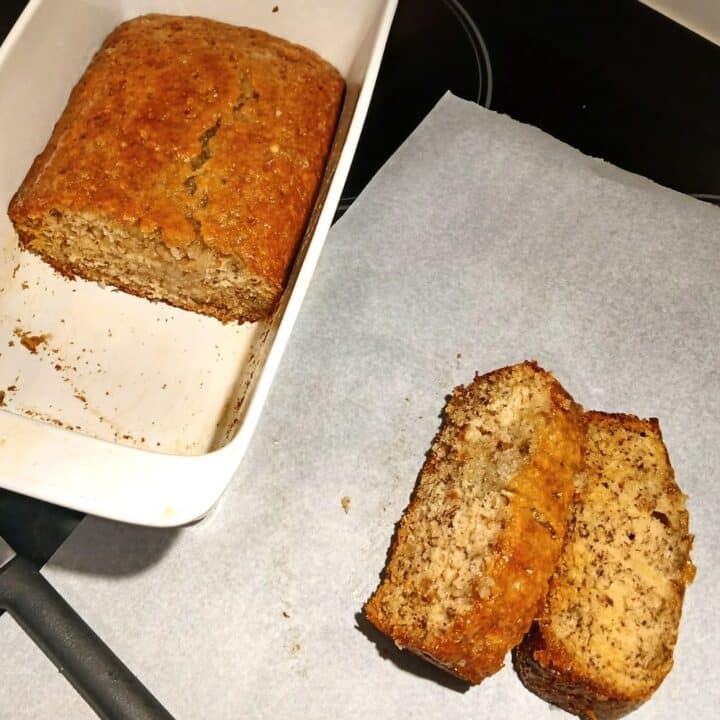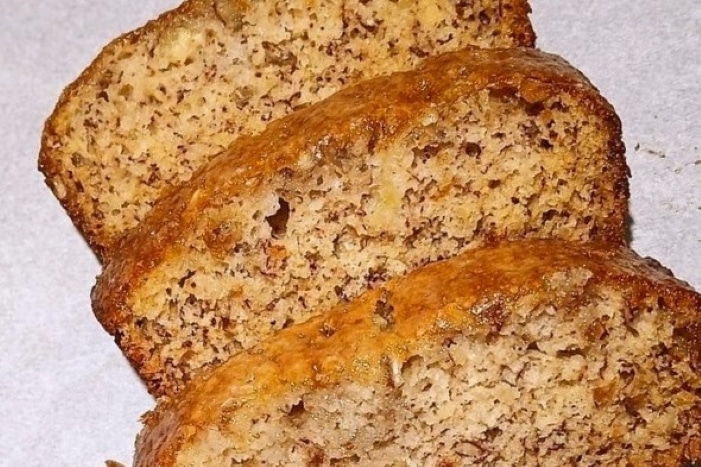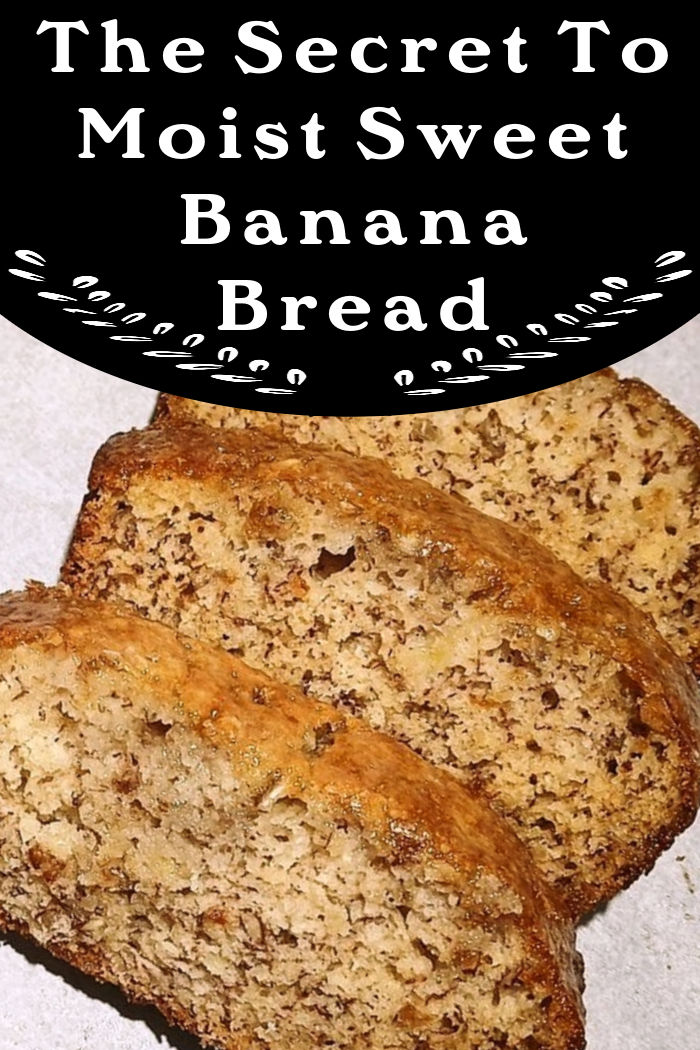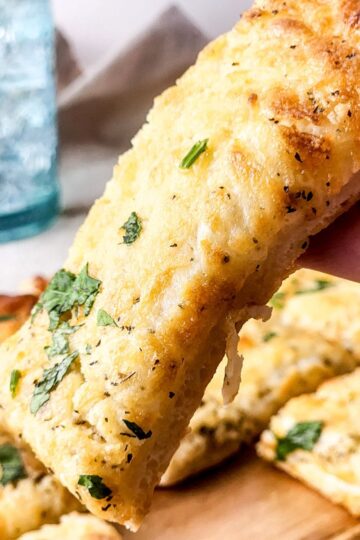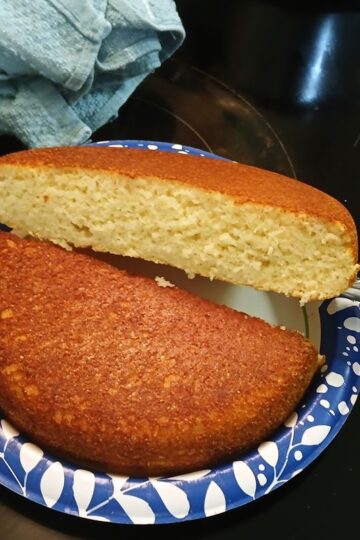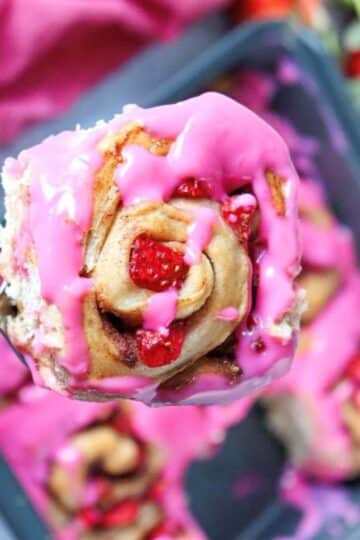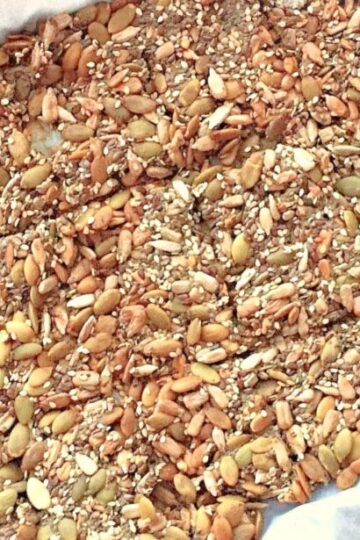So a few years ago, I modified our old banana nut bread recipe, and the changes make this bread moist, sweet, and not dry at all. I'll let you in on my secrets! There are more than one. I use three over-ripe bananas and make two loaves, but there are more secrets to come.

The bananas for your banana bread should be super ripe. Often, you can buy over-ripe bananas in the produce section of your grocery store. If the bananas are not ripe enough to make bread, then store them for a day or two in a brown paper bag or plastic bag. To make the ripen even faster, add an apple to the bag!
When you are ready to make your bread, mash the bananas with a fork until they are mush.
Sweet Banana Nut Bread With Powdered Sugar Glaze
I never cared for banana nut bread when I was young. The banana bread I had in the past was dry and somewhat bland, and I prefer sweet treats. This recipe is perfect for anyone with a sweet tooth. Try it out....
Ingredients
Bread Ingredients
- 3 medium bananas mashed,I use a fork
- ½ cup mayo
- 1 egg well beaten
- 1 teaspoon vanilla flavoring
- ¾ cup sugar
- 1 ½ cups self-rising flour
- 1 teaspoon baking soda
- ½ teaspoon salt
- ½ cup chopped pecans or walnuts (toasted walnuts are the best)
Glaze Ingredients
- ½ cup powdered sugar
- 1-2 tablespoons milk
Instructions
Bread
- Mix the mashed bananas, mayo, egg, and vanilla flavoring in a medium-sized bowl.
- Combine the flour, baking soda, and salt in a two-cup measuring cup.
- Mix the dry ingredients into the wet mixture and stir until thoroughly combined. I mix my bread by hand.
- Add the nuts and stir.
- Spray two loaf pans with a light coating of cooking oil.
- Pour the banana bread mixture into the loaf pans (or two pans roughly the size of loaf pans) and bake at 350 degrees for 35 minutes. Cooking times will vary with ovens and the size of your baking pans. The banana bread is done whenever a toothpick inserted into the bread comes out clean.
Glaze
- Combine powdered sugar and milk in a bowl or measuring cup and mix together.
- Microwave the glaze for 10 to 15 seconds and stir.
- While the bread is hot from the oven use a toothpick to poke holes all over the bread.
- Spoon the glaze over the baked bread slowly so it has time to soak into the bread.
The Secrets To Making Great Banana Bread
Mix the ingredients by hand. You can use a mixer if it is easier for you.
Tip 1 for moist banana bread:
Use a recipe similar to mine where the amount of ingredients is smaller than regular banana nut bread recipes. Then, divide the mixture into two pans, not one.
The bread doesn't take as long to cook, and it will be super moist instead of dry as a bone.
Tip 2 for moist, sweet banana bread:
Once the bread is done, coat it with a powdered sugar glaze.
Poke holes in the banana bread with toothpicks and slowly pour the glaze over the bread so it will soak into the whole loaf.
Tip 3 for making the best banana bread:
Use mayo instead of oil and add vanilla flavoring!
Tip 4 is the extras:
We like our banana bread with toasted walnuts, and I have a recipe for toasting walnuts. Sometimes, I will add a scoop or two of peanut butter to the banana bread mixture. Everyone knows peanut butter and banana are the perfect combo.
Now, I love banana nut bread because I made the recipe my own and the banana nut bread is sweet and moist. Our oldest granddaughter loves this bread, too, so each time I make this recipe, I give her one of the loaves to take home.
Then I usually send a few slices to our next-door neighbor.
The hubby and I don't need all that bread. Of course, I could freeze some of the slices, but I enjoy sharing my baked goods, as well as cookies and candies.
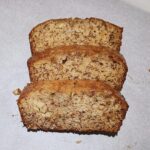
Sweet Banana Nut Bread With Mayo
Author: Recipe Idea Shop
Ingredients
Bread Ingredients
- 3 medium bananas mashed,I use a fork
- ½ cup mayo
- 1 egg well beaten
- 1 teaspoon vanilla flavoring
- ¾ cup sugar
- 1 ½ cups self-rising flour
- 1 teaspoon baking soda
- ½ teaspoon salt
- ½ cup pecans or walnuts chopped
Glaze Ingredients
- ½ cup powdered sugar
- 1-2 tablespoons milk
Instructions
Bread
- In a medium size bowl combine mashed bananas, mayo, egg, and vanilla flavoring.
- In a two-cup measuring cup, combine the flour, baking soda, and salt.
- Mix the dry ingredients into the wet mixture and stir thoroughly. Add the nuts and stir.
- Spray two loaf pans with a light coating of cooking oil.
- Pour banana bread mixture into the loaf pans (or two pans roughly the size of loaf pans) and bake at 350 degrees for 35 minutes. Cooking times will vary with ovens and the size of your baking pans. The banana bread is done whenever a toothpick inserted into the bread comes out clean.
Glaze
- Combine powdered sugar and milk in a bowl or measuring cup and mix together.
- Microwave the glaze for 10 to 15 seconds and stir.
- While the bread is hot from the oven use a toothpick to poke holes all over the bread.
- Spoon the glaze over the baked bread slowly so it has time to soak into the bread.
Other recipes for you...
30 Minute Spicy Hoppin’ John Soup
Original Knorr Spinach Dip Made With Knorr Vegetable Soup Mix
Almond Bark Popcorn Pretzel Corn Pop Crunch
Crunchy Peanut Butter Cookies With Salted Peanuts

